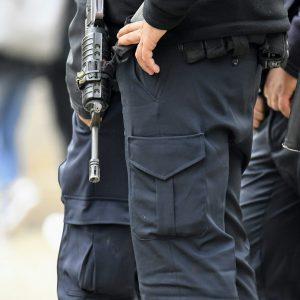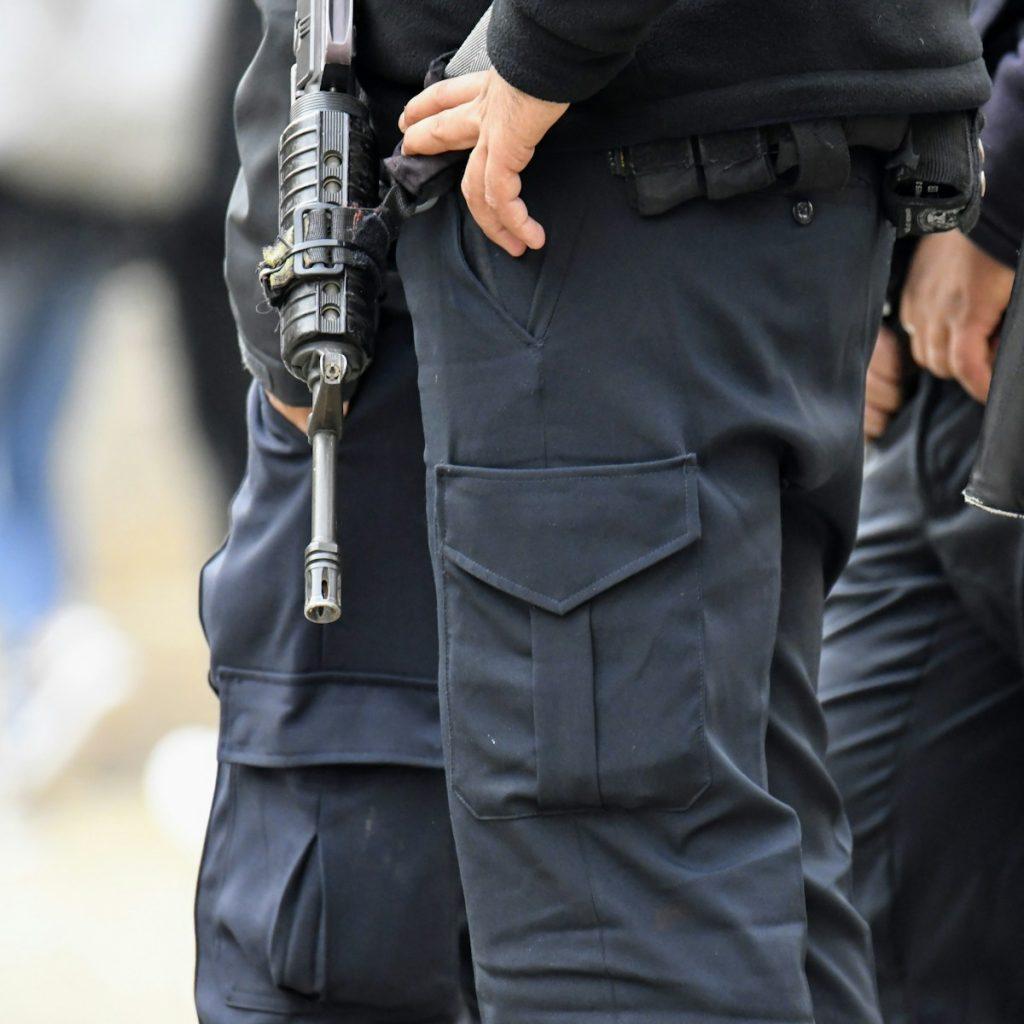Seeking personal professional firearms training? Dive into a comprehensive guide that delves into the historical context, benefits, and essential tips for mastering this crucial skill, students. Personal professional firearms training has evolved over time, aligning with the changing needs of individuals seeking to enhance their proficiency in handling firearms safely and effectively. In this post, we explore the significance of such training in today’s world, highlighting its role in promoting safety, confidence, and responsible gun ownership practices. Discover how investing in personal professional firearms training can equip you with the knowledge and skills needed to navigate various scenarios confidently.
Key Takeaways
-
Prioritize gun safety by following proper handling procedures and investing in professional firearms training.
-
Focus on mastering the fundamental skills of shooting to build a strong foundation for advanced techniques.
-
Improve marksmanship through consistent practice, proper grip, stance, and sight alignment.
-
Develop a tactical mindset by understanding cover and concealment, movement techniques, and decision-making under stress.
-
Build situational awareness by staying alert, assessing surroundings, and recognizing potential threats.
-
Progress through different skill levels gradually, seeking guidance from experienced instructors to enhance proficiency.
Embracing Gun Safety

Safety Protocols
Implement strict safety protocols during all training sessions. Emphasize following firearm safety rules at all times. Ensure a safe environment for all participants to prevent accidents and promote responsible gun handling. Prioritize safety above all else to instill a culture of respect for firearms.
Handling Basics
Teach fundamental techniques for handguns, shotguns, and rifles. Focus on grip, stance, and manipulation of firearms for optimal control. Mastering basic handling skills is crucial before advancing to more complex training exercises. Practice makes perfect in honing these essential skills.
Storage Solutions
Discuss secure storage options for firearms at home and during travel. Stress the importance of storing firearms away from unauthorized access to prevent accidents or misuse. Gun safes and lockboxes are recommended solutions for ensuring both security and accessibility when needed.
Mastering Fundamentals
Stance and Grip
Establish a solid shooting stance by positioning your feet shoulder-width apart and bending your knees slightly. Keep your body weight evenly distributed to maintain balance. Proper grip technique involves wrapping your dominant hand around the grip, ensuring a firm hold while allowing your non-dominant hand to support from below. The role of stance and grip cannot be overstated; they form the foundation for shooting accuracy and control.
Sight Alignment
Achieving accurate shots hinges on understanding sight alignment. Align the front sight post with the rear sight notch while focusing on the target. Consistent practice of aligning sights with targets sharpens marksmanship skills over time. To maintain sight alignment, concentrate on keeping the sights level and centered regardless of external factors like wind or lighting conditions.
Trigger Control
Mastering trigger control entails smoothly pressing the trigger without disturbing sight alignment. A jerky trigger pull can throw off your aim, highlighting the significance of executing precise movements. Engage in trigger control drills to refine this skill, gradually increasing speed while maintaining accuracy. Remember, a steady hand and deliberate trigger squeeze are key to hitting your target consistently.
Enhancing Marksmanship
Accuracy Drills
Engage in various accuracy drills to enhance shooting precision. Focus on target acquisition and engagement within time constraints. Monitor progress through these drills to develop skills effectively.
Precision Techniques
Learn advanced precision shooting techniques for challenging situations. Practice shooting at varying distances to improve precision skills significantly. Apply these techniques in realistic shooting simulations for practical experience.
Consistency Practices
Emphasize the importance of consistent training routines to enhance skills continually. Set up practice schedules to uphold shooting proficiency levels. Regularly practicing consistency ensures long-term skill development.
Developing Tactical Mindset
Decision-Making Skills
Develop decision-making skills under pressure by training in realistic shooting scenarios. Improve your ability to make quick and effective decisions when faced with unexpected challenges. Simulate real-life situations to enhance your quick decision-making process, ensuring you can act swiftly and decisively.
Train regularly on assessing threats and making rapid decisions in dynamic environments. By practicing these skills, you’ll be better prepared to handle high-stress situations effectively. Enhancing your decision-making abilities will enable you to navigate complex scenarios with confidence and precision.
Stress Management
Implement stress management techniques to maintain composure during high-pressure shooting scenarios. Learn how to stay calm and focused under stress, essential for optimal performance. Participate in shooting drills that simulate stress-inducing situations, helping you build resilience and mental toughness.
Focus on mental preparedness and stress control to enhance your overall performance. By mastering stress management, you’ll be able to perform at your best even in challenging circumstances. Training your mind to remain calm and composed is crucial for success in personal professional firearms training.
Scenario Training
Engage in scenario-based training sessions to simulate real-world shooting situations effectively. Practice responding to various scenarios, from hostage rescue missions to active shooter scenarios. Through scenario training, improve your situational awareness and response strategies for enhanced effectiveness.
Enhance your tactical decision-making skills by participating in scenario-based exercises regularly. By immersing yourself in different scenarios, you’ll develop the ability to think quickly on your feet and adapt to changing circumstances efficiently. Scenario training is a valuable tool for honing your instincts and improving your overall performance.
Building Situational Awareness
Observation Skills
Develop keen observation skills for threat detection and situational awareness. Train to recognize potential dangers effectively. Enhance skills through practical exercises and drills.
Environment Analysis
Analyze environments for potential threats and shooting challenges. Adapt techniques based on factors like lighting. Incorporate analysis into strategies for better performance.
Threat Assessment
Learn to assess threats quickly in different scenarios. Practice drills to enhance decision-making. Focus on identifying threats and responding effectively to mitigate risks.
Transitioning Skill Levels
Novice to Intermediate
Transition beginners to intermediate shooters by progressively enhancing their skills through tailored training sessions. Focus on building a strong foundation by mastering fundamental techniques such as grip, stance, and sight alignment. Provide personalized guidance to help shooters advance from basic proficiency to more complex shooting scenarios.
-
Tailored instruction bridges the gap between novice and intermediate levels.
-
Progressive training enhances shooting proficiency effectively.
-
Advancing skills require mastering basic techniques like grip and stance.
Intermediate to Expert
Elevate intermediate shooters to expert levels by offering specialized training that focuses on refining advanced shooting techniques. Emphasize the importance of precision, speed, and accuracy in every shot. Challenge shooters with intricate drills designed to push their skill levels beyond intermediate standards towards expert proficiency.
-
Specialized training refines advanced shooting techniques effectively.
-
Complex drills push skill levels towards expert standards.
-
Precision, speed, and accuracy are crucial for advancing to expert levels.
Understanding Concealment Tactics
Carry Methods
Different carry methods offer unique advantages and disadvantages for both concealed and open carry. It’s crucial to explore options such as appendix, hip, shoulder, ankle, and pocket carry to find what works best for you. While each method has its benefits, understanding the trade-offs is essential for effective firearm concealment.
-
Advantages:
-
Appendix carry provides quick access.
-
Shoulder holsters offer comfort for extended wear.
-
-
Disadvantages:
-
Ankle carry may be slower to draw from.
-
Pocket carry might not accommodate larger firearms effectively.
-
Training on drawing techniques specific to your chosen carry method is vital. Practicing drawing from various positions helps build muscle memory and ensures quick and efficient access in high-stress situations.
Drawing Techniques
Efficient drawing techniques are paramount for quick and safe firearm access during self-defense incidents. Mastering the skill of drawing swiftly can mean the difference between life and death in critical moments. Training should focus on smooth, fluid motions that minimize the risk of fumbling or accidents.
-
Practice drawing from different positions:
-
Standing
-
Sitting
-
Grounded
-
Emphasize the importance of consistent practice to enhance muscle memory and reflexes when drawing from different holsters or carry positions.
Legal Considerations
Understanding the legal aspects surrounding firearms ownership and self-defense is crucial for responsible gun owners. Educate yourself on laws governing the use of force in self-defense scenarios to ensure compliance with legal regulations. Familiarize yourself with local laws regarding carrying firearms in public spaces to avoid legal issues.
-
Laws governing use of force:
-
Castle Doctrine
-
Stand Your Ground laws
-
Compliance with firearm regulations requires a deep understanding of state-specific laws related to concealed carry permits, firearm transport, and use of deadly force in threatening situations.
Combat Mindset and Safety
Avoidance Strategies
Personal professional firearms training emphasizes teaching strategies for avoiding dangerous situations. Participants focus on situational awareness to preemptively identify potential threats. By training individuals in proactive measures, conflicts can be prevented before escalating.
Engage in sessions that cover various avoidance techniques such as understanding your surroundings, recognizing suspicious behavior, and assessing potential risks. These strategies empower individuals to stay vigilant and take necessary precautions to ensure personal safety.
-
Pros:
-
Enhances personal safety
-
Promotes a proactive approach to self-defense
-
De-escalation Techniques
Participants practice de-escalation tactics during personal professional firearms training to effectively reduce tensions in threatening scenarios. By mastering verbal and non-verbal communication skills, individuals can navigate conflict-ridden situations with confidence.
Instructors emphasize the significance of de-escalation in diffusing potentially violent encounters. Through role-playing exercises and scenario-based simulations, participants learn how to manage high-stress situations calmly and responsibly.
-
Steps for Practicing De-escalation:
-
Maintain a calm demeanor.
-
Use active listening techniques.
-
Employ empathy and understanding in communication.
-
Fostering Precision Shooting
Long-Distance Shooting
Engage in training sessions to master long-distance shooting techniques, honing precision at extended ranges. Adjust sights meticulously to ensure accurate shots, compensating for distance and windage effectively. By practicing shooting at varying distances consistently, you can significantly enhance your long-range accuracy.
Target Acquisition
Develop quick and precise target acquisition skills essential for fast-paced scenarios. Through dedicated training, learn to acquire targets swiftly and accurately under diverse conditions. Improve your target acquisition speed and accuracy by engaging in repetitive drills that simulate real-world situations.
Closing Thoughts
You’ve now journeyed through the essential aspects of personal professional firearms training. Embracing gun safety, mastering fundamentals, enhancing marksmanship, and developing a tactical mindset are all crucial steps in your progression. Building situational awareness, transitioning skill levels, understanding concealment tactics, focusing on combat mindset and safety, and fostering precision shooting are key components in honing your skills.
Take these learnings to heart and continue to practice with dedication and discipline. Remember, proficiency with firearms requires ongoing commitment and a respect for safety protocols. Stay vigilant, keep refining your techniques, and always prioritize safety above all else. Now go out there and continue your training journey with confidence!
Frequently Asked Questions
What are the benefits of personal professional firearms training?
Personal professional firearms training offers enhanced gun safety, mastery of fundamentals, improved marksmanship skills, tactical mindset development, increased situational awareness, skill level transitions, understanding concealment tactics, fostering precision shooting abilities, and instilling a combat mindset for safety and efficiency.
How can I improve my marksmanship skills through training?
By attending personal professional firearms training sessions focusing on enhancing marksmanship fundamentals like grip, stance, sight alignment, trigger control, and follow-through. Consistent practice under expert guidance helps in refining accuracy and precision in shooting techniques.
Is understanding concealment tactics important in firearms training?
Understanding concealment tactics is crucial as it teaches individuals how to effectively hide their firearm from view while ensuring quick accessibility if needed. Learning about different types of concealment methods enhances safety and preparedness in various real-life scenarios.
What does developing a tactical mindset entail for students in firearms training environment?
Developing a tactical mindset involves learning strategic approaches to handling firearms beyond basic shooting skills. It includes decision-making under pressure, assessing threats, adapting to changing situations, using cover effectively, and employing advanced techniques for self-defense and protection.
How does personal professional firearms training enhance situational awareness?
Through specialized training modules focusing on building situational awareness skills such as threat assessment, environmental scanning, recognizing potential dangers, and maintaining alertness. Training helps individuals stay vigilant and proactive in identifying risks and responding appropriately in different scenarios.

